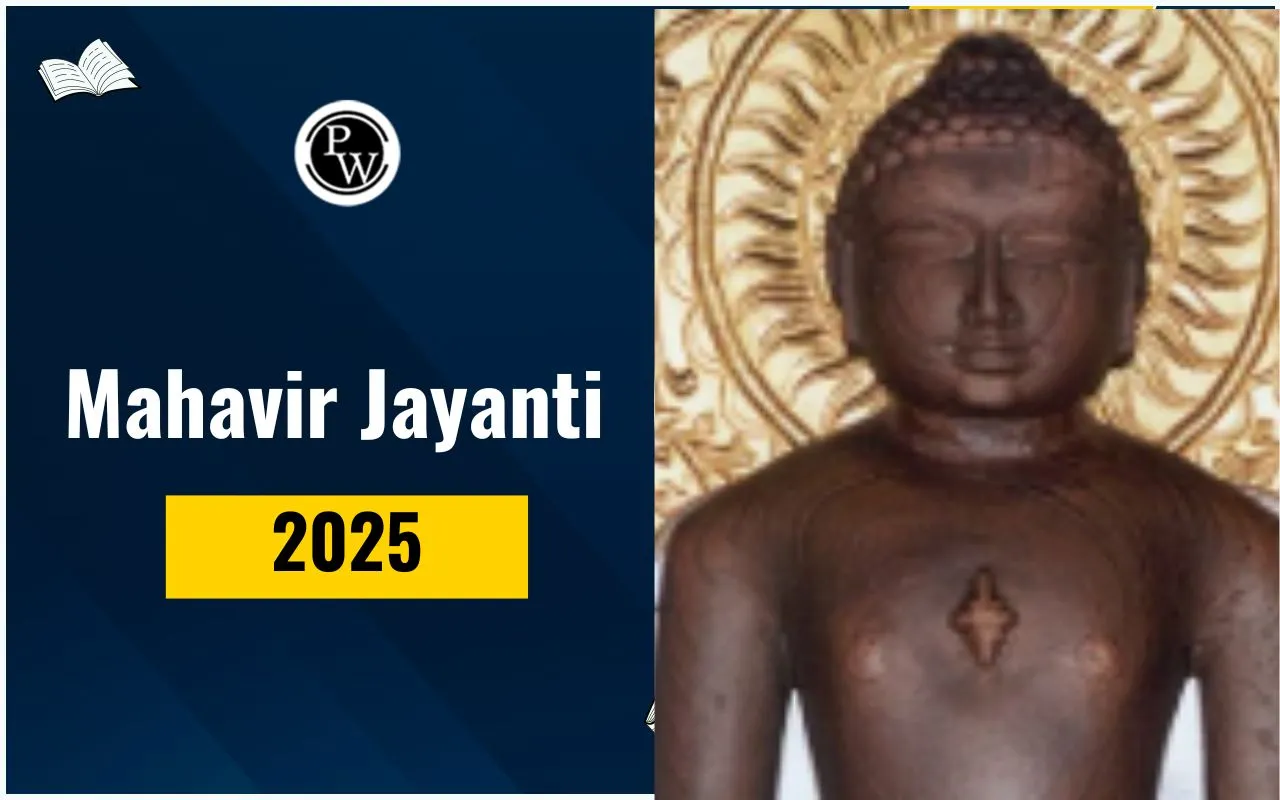
Mahavir Jayanti 2025 is one of the most important religious festivals for the Jain community. It celebrates the birth of Lord Mahavir, the 24th and last Tirthankara of Jainism. He was a spiritual leader who spread the message of non-violence, truth, and self-discipline. Every year Mahavir Jayanti inspires millions of people across India and the world with the teachings of Jainism.
Mahavir Jayanti 2025 is being celebrated on 10 April 2025. This day holds great value for the Jain community and spiritual seekers alike. Devotees offer prayers, visit temples, and participate in charitable activities. Religious songs, lectures, and processions with the idol of Mahavira are organised in many cities across India.
The Mahavir Jayanti 2025 celebration will focus on spreading Mahavira's core teachings—Ahimsa (non-violence), Satya (truth), Asteya (non-stealing), Brahmacharya (chastity), and Aparigraha (non-possessiveness).
To understand Mahavir Jayanti 2025, we must know the basics of Jainism. Jainism is one of the oldest religions in India. It is based on the path of non-violence and truth. Jainism believes in the idea of living a simple life without harming any living being. It promotes compassion, self-control, and spiritual development.
Lord Mahavira is considered the last and most important Tirthankara in Jainism. Tirthankaras are spiritual teachers who help people cross over the cycle of birth and death. Jainism teaches that every soul has the power to become divine through self-effort. On Mahavir Jayanti 2025, Jains will reflect on Mahavira’s teachings.
Mahavir Swami was born in 540 BCE in Kundagrama, near present-day Vaishali in Bihar. His birth name was Vardhamana. He belonged to the royal Ikshvaku dynasty. His father was King Siddhartha, and his mother was Queen Trishala.
Vardhamana was raised in a wealthy and noble family. Despite the comforts of palace life, he was drawn to spiritual questions from a young age. At the age of 30, he renounced the world and became a monk. He gave up all possessions and lived a life of extreme simplicity.
| Biography of Mahavir Swami | |
| Birth Name | Vardhamana |
| Also Known as | Mahavira, Vira, Ativira, Sanmatinatha (Nigantha Nataputta in Buddhist texts) |
| Birth | c. 599 BCE (traditional), possibly 540 BCE (historical), in Kshatriyakundagrama or Kundagram, near Vaishali, Bihar |
| Parents | Mother: Trishala (Lichchavi princess), Father: Siddhartha (chief of the Jnatrika clan) |
| Marriage | Married to Princess Yashoda (Śvētāmbara tradition), unmarried (Digambara tradition) |
| Children | Daughter: Priyadarshana (Śvētāmbara tradition) |
| Renunciation | Left home at age 30 to become an ascetic |
| Ascetic Life | Practiced severe austerities for 12.5 years, Attained Kevalgnan (supreme knowledge/enlightenment) |
| Teachings | Advocated non-violence (Ahimsa), the five great vows (Mahavratas) |
| Five Great Vows | Ahimsa (non-violence), Satya (truth), Asteya (non-stealing), Brahmacharya (chastity), Aparigraha (non-attachment) |
| Philosophical Principles | Anekantavada (plurality of viewpoints), Syadvada (conditional viewpoints), Nayavada (partial perspectives) |
| Legacy | Teachings compiled in Jain Agams |
| Death | Attained Nirvana at age 72 in 468 BC at Pavapuri, Bihar |
|
“In happiness and suffering, in joy and grief, we should regard all creatures as we regard our own self.” ― Mahavira |
The life of Mahavir Swami is marked by several major events that shaped his journey and the rise of Jainism. Each event teaches us valuable life lessons. Here are some of the key moments:
Birth in 540 BCE: Born as Vardhamana to a royal Jain family in Kundagrama.
Signs of greatness: His mother, Queen Trishala, saw 14 dreams indicating the child’s spiritual greatness.
Early life: Displayed courage and wisdom even as a child. He once controlled a fierce elephant calmly.
Renunciation at age 30: Left all comforts and began life as an ascetic monk.
12 years of austerity: Practiced silence, fasting, and deep meditation in jungles.
Enlightenment (Kevala Jnana): Attained omniscience after 12.5 years of meditation and penance at age 42.
Preached for 30 years: Spread messages of ahimsa, aparigraha (non-possession), and Satya (truth).
Nirvana (Liberation): Attained Nirvana at age 72 in Pawapuri, Bihar. His liberation is commemorated by Jains as Diwali.
The significance of Mahavir Jayanti 2025 goes beyond rituals and ceremonies. It is a day to remember and practise the timeless values taught by Lord Mahavira. His teachings are relevant even today, especially in a world full of stress, violence, and materialism. On this day, people reflect on their actions and aim to live with more compassion and honesty.
For Jains, Mahavir Jayanti 2025 is the holiest festival. It brings the community together in celebration, learning, and service. Devotees clean and decorate temples, carry out charitable acts, and distribute food and clothes to the poor. Religious events highlight the Biography of Mahavir Swami, inspiring people to follow his path of truth and non-attachment.
In conclusion, Mahavir Jayanti 2025 is not just a religious celebration. It is a reminder to follow a life of truth, simplicity, and compassion.
Do you know that Jainism is one of the most important topics in UPSC exams? Explore PW UPSC Courses today and take your preparation to the next level!
| Related Post | ||
| UPSC CSAT Online Coaching | UPSC Syllabus 2025 | UPSC CSAT 2025 |
| UPSC Syllabus In Hindi | UPSC Previous Year Question Paper | UPSC CSAT Formula |
